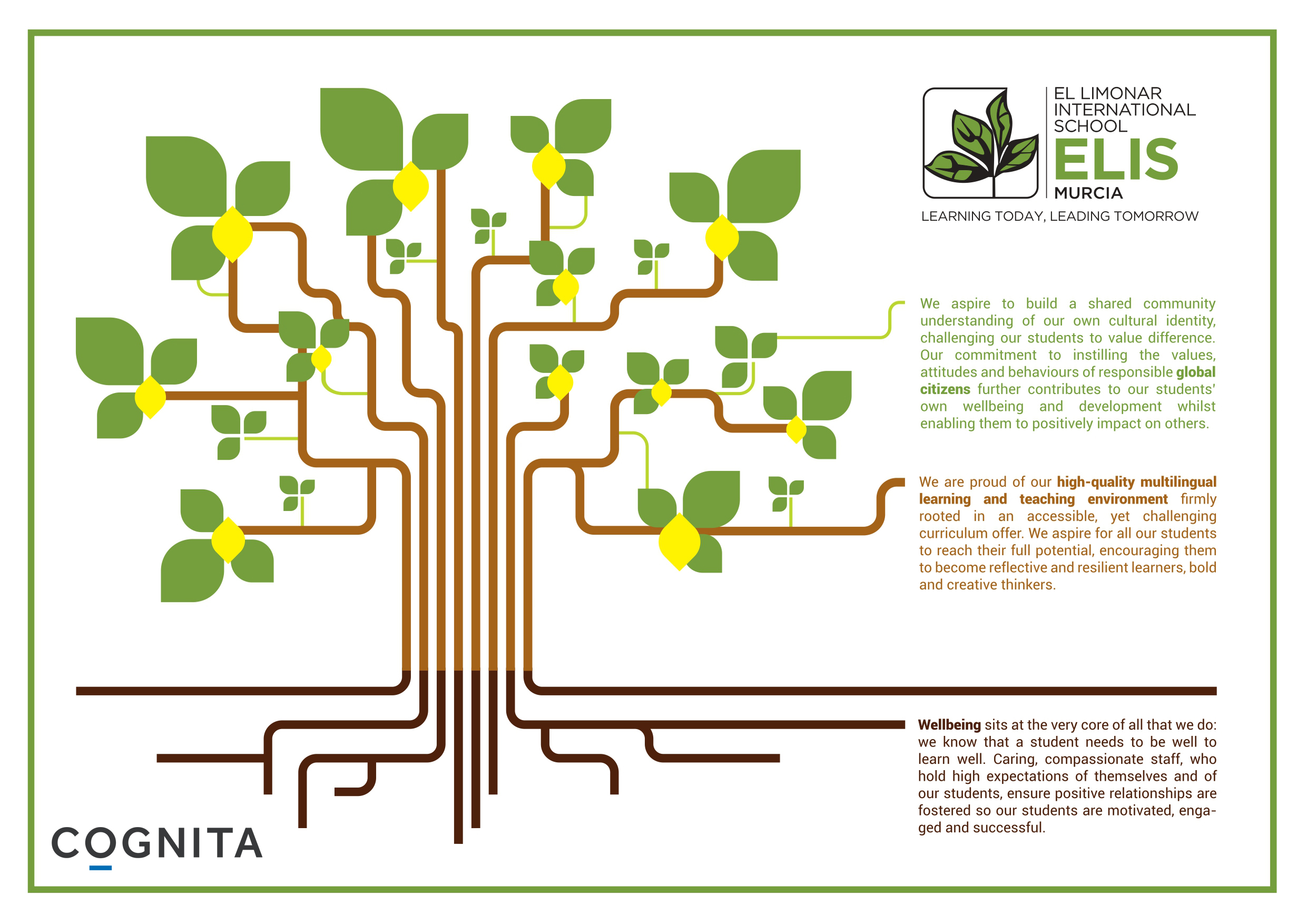29 March 2023
Identity: is it visible or invisible?
Dr Simon Camby, Group Chief Education Officer, recently visited El Limonar International School (ELIS) Murcia. Having known this school for many years, he describes the visit as like ‘coming home’. Simon explores the connection between organisational identity and purpose in this most recent think piece.
I would describe ELIS Murcia as a school that takes gradual and thoughtful incremental steps in improvement. It is not a school that jumps to try every latest fad. It is a school that considers, thinks carefully, plans with intention and repeatedly checks for impact. Over the past few years Vanessa Grimward and the ELIS Murcia team have been thinking deeply about the school’s purpose. Our Cognita Framework identifies one of the core contributors of effective leadership as each school having: A palpable clarity of purpose that is shared, understood and lived.
This work on the school’s purpose was closely aligned with the school’s self-evaluation work linked to gaining accreditation from the Council of International Schools (CIS). The school is confident in both who it is and who it is not. The mission, vision and values are clearly stated. This is brought to life through the definitions of wellbeing, learning & teaching and global citizenship. The image of the lemon tree is intentional – the meaning of “El Limonar” is lemon grove.

These definitions are the core of the school’s identity and work. These are fundamental to improvement planning, to evaluation and ongoing improvement. Through conversations with students, it is clear that these are living concepts and not simply visuals around the school.
Wellbeing: ‘We learn to look after ourselves. There are different ways to do this for our body and our mind. If we don’t do this we won’t learn and can’t help others.’ (10-year old)
Learning: ‘The teaching is strong. My teachers are always there. I can reach out any time and know they will support me.’ (18-year old)
Global Citizenship: ‘We work hard to understand our place in the world and also to value people’s similarities and differences. If we all do this, we can create a better world.’ (11-year old)
It can sound very grand to think about your purpose. But if you don’t do this, where is the school community heading? At ELIS Murcia, there is a very clear ‘north star’ that is understood by staff, students and parents. I believe that one of the reasons for this is because the school worked so hard on actively engaging with a broad range of voices across the community in defining their guiding statements.
‘A palpable clarity of purpose that is shared, understood and lived.’ From my perspective, this is definitely the case at El Limonar International School Murcia. As a result, it seems to me that organisational purpose and identity are interwoven and intrinsically connected. Whilst identity is conceptual, one can most certainly recognise it in conversations with students, staff and parents.

